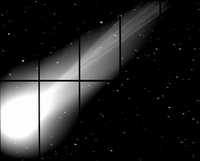COBS News archive
Rosetta's Target Comet is Becoming Active
May 17, 2014
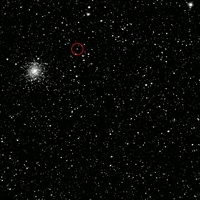
Rosetta space probe: Landing on a comet to observe nucleus and environment
May 12, 2014
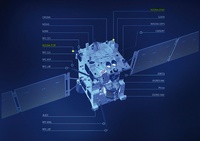
In March 2004, the Rosetta orbiter was launched into space to analyse and observe the nucleus and environment of the comet 67P/Churyumov-Gerasimenko. Little research has been done on comets and they still hold many secrets. One theory is that comets brought water (and thus possibly even life) to Earth. Although space probes have been able to carry out isolated investigations, this has only been while the comets were flying past. At least until now. This will be the first probe not only to collect measurement data "en passant" as it were, but to accompany the comet -- and even to land on it.
A New Meteor Shower in May?
May 06, 2014
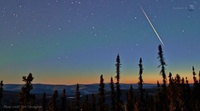
Comet 209P/LINEAR & its Meteor Shower
April 19, 2014
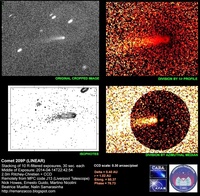
209P/LINEAR is a periodic comet discovered by the Lincoln Laboratory Near-Earth Asteroid Research (LINEAR) survey on five images taken on 2004, February 3.40 (discovery magnitude ~18.1). Reported by LINEAR as an apparent asteroidal object, it has been found to show a narrow 1'.1 tail in p.a. 274 deg (slightly expanding toward the end) on CCD images obtained by R. H. McNaught with the 1.0-m f/8 reflector at Siding Spring on Mar. 30.8 UT.
New Comet: C/2014 F1 (HILL)
April 02, 2014
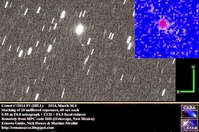
Rosetta Sets Sights on Destination Comet
March 31, 2014
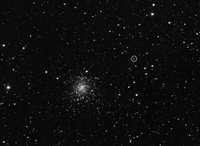
The Rosetta spacecraft has caught a first glimpse of its destination comet since waking up from deep-space hibernation on Jan. 20. The first images of comet 67P/Churyumov-Gerasimenko were taken on March 20 and 21 by the Optical, Spectroscopic and Infrared Remote Imaging System (OSIRIS) wide-angle camera and narrow-angle camera. Rosetta is an international mission spearheaded by the European Space Agency with support and instruments provided by NASA.
Hubble Sees Mars-Bound Comet Sprout Multiple Jets
March 27, 2014
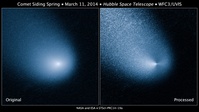
Hubble Witnesses Asteroid's Mysterious Disintegration
March 18, 2014
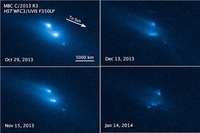
New Comet: C/2014 E2 (JACQUES)
March 14, 2014
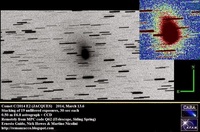
Rare form of nitrogen detected in comet ISON
March 12, 2014
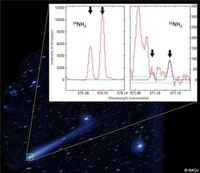
Astronomers observed the Comet ISON during its bright outburst in the middle of November 2013. Subaru Telescope's High Dispersion Spectrograph has detected two rare forms of nitrogen in the comet ISON. Their results support the hypothesis that there were two distinct reservoirs of nitrogen the massive, dense cloud ("solar nebula") from which our Solar System may have formed and evolved.
A good year to find a Comet
February 13, 2014
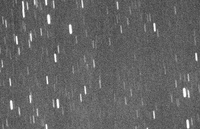
NASA Preparing for 2014 Comet Watch at Mars
January 31, 2014

NASA Instruments on European Comet Spacecraft Begin Countdown
January 25, 2014
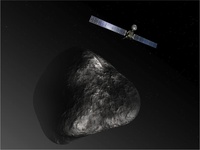
Rosetta: 'Sleeping Beauty' Wakes Up from Deep Space Hibernation
January 21, 2014
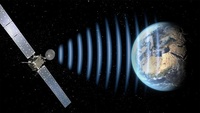
Rosetta: To Chase a Comet
January 17, 2014
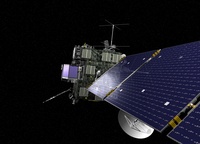
Comets are among the most beautiful and least understood nomads of the night sky. To date, half a dozen of these most heavenly of heavenly bodies have been visited by spacecraft in an attempt to unlock their secrets. All these missions have had one thing in common: the high-speed flyby. Like two ships passing in the night (or one ship and one icy dirtball), they screamed past each other at hyper velocity -- providing valuable insight, but fleeting glimpses, into the life of a comet. That is, until Rosetta.
'Standing On a Comet': Rosetta Mission Will Contribute to Space Weather Research
January 16, 2014
New Comet: C/2014 A4 (SONEAR)
January 16, 2014
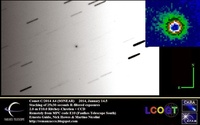
Cbet nr. 3783, issued on 2014, January 16, announces the discovery of an apparently asteroidal object (discovery magnitude ~18.1) by Cristovao Jacques, Eduardo Pimentel, and Joao Ribeiro de Barros on CCD images obtained on Jan. 12.0 UT with a 0.45-m f/2.9 reflector of the Southern Observatory for Near Earth Research (SONEAR) at Oliveira, Brazil.
Comet ISON Is Still Dead
December 21, 2013
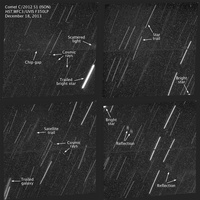
Fire Vs. Ice: The Science of ISON at Perihelion
December 16, 2013
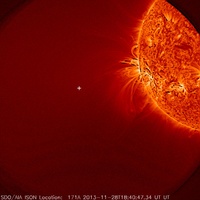
Intricacy of Comet Lovejoy's Tail Captured
December 08, 2013
